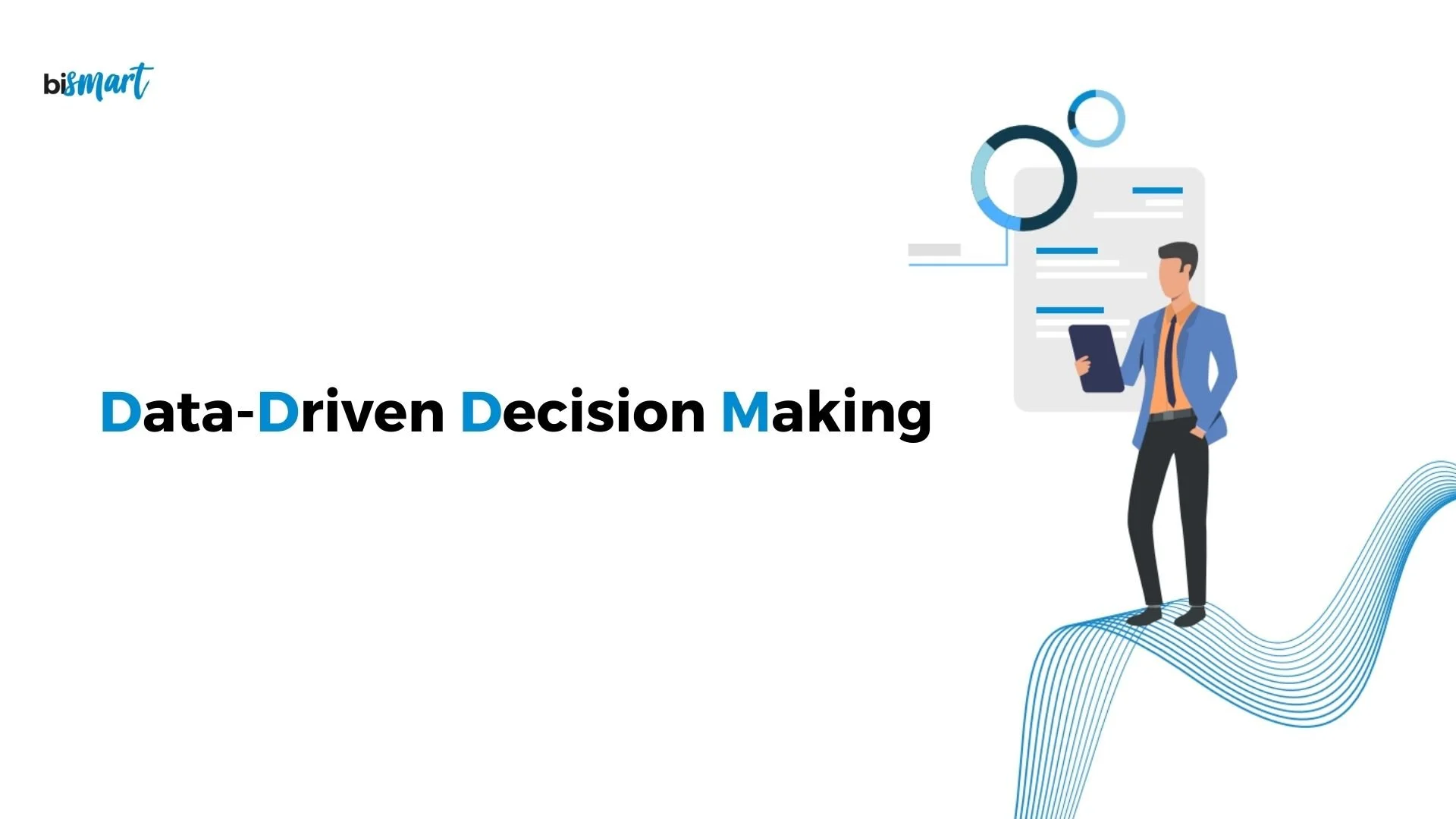Improving Data-Driven Decisions: A Complete Guide
Introduction
In today’s digital economy, organizations are flooded with data from multiple sources—customer interactions, market trends, social media, sensors, and operational systems. While access to data is no longer a problem, turning that data into effective, actionable, and intelligent decisions remains a challenge. This is where data-driven decision-making (DDDM) comes into play.
Improving data-driven decisions is not just about adopting new technologies—it’s about building a culture, developing the right processes, ensuring data quality, and aligning insights with business strategy. In this article, we’ll explore what data-driven decision-making means, why it matters, the challenges organizations face, and practical ways to improve it.
What Is Data-Driven Decision Making?
Data-driven decision-making (DDDM) is the practice of basing decisions on facts, metrics, and insights derived from data rather than relying solely on intuition, past experiences, or assumptions.
Instead of asking, “What do we think will happen?” organizations using DDDM ask, “What does the data show us?”
Examples include:
-
A retail company using purchase history data to predict demand.
-
A hospital using patient data to improve diagnosis accuracy.
-
A marketing team using analytics to measure campaign ROI.
Why Improving Data-Driven Decisions Matters
Organizations that excel at data-driven decision-making gain significant advantages:
-
Increased Accuracy – Decisions based on facts reduce guesswork and minimize risks.
-
Faster Responses – Real-time data helps companies act quickly in competitive environments.
-
Better Resource Allocation – Insights guide where to invest time, money, and talent.
-
Improved Customer Experience – Understanding customer preferences enables personalization.
-
Competitive Advantage – Data-driven companies innovate faster and outperform competitors.
According to a study by McKinsey, organizations that adopt data-driven practices are 23 times more likely to acquire customers, 6 times more likely to retain customers, and 19 times more likely to be profitable.
Key Challenges in Data-Driven Decision-Making
Despite the benefits, many organizations struggle to fully leverage data. Some common challenges include:
-
Poor Data Quality – Inaccurate, incomplete, or outdated data leads to flawed decisions.
-
Data Silos – Different departments store data separately, limiting a unified view.
-
Overwhelming Data Volumes – Too much data can cause analysis paralysis.
-
Lack of Data Skills – Employees may lack the training to interpret and use data.
-
Bias in Data or Algorithms – Unchecked biases can lead to unfair or ineffective decisions.
-
Resistance to Change – Teams used to intuition-based decisions may resist data adoption.
Improving data-driven decisions requires addressing these barriers systematically.
Strategies to Improve Data-Driven Decision-Making
Here are 10 proven strategies to help organizations enhance their data-driven decision-making:
1. Build a Strong Data Culture
Data culture is about making data the backbone of every decision. Leaders should encourage employees to rely on evidence rather than assumptions. Celebrating data-driven wins motivates teams to use analytics consistently.
2. Ensure High-Quality Data
High-quality data is accurate, complete, consistent, and up to date. Organizations should invest in data governance frameworks, regular audits, and automated validation processes to eliminate errors.
3. Break Down Data Silos
Data silos prevent organizations from getting a holistic view. Integrating systems through cloud platforms, data warehouses, and APIs ensures that everyone has access to the same information.
4. Invest in Advanced Analytics
Analytics tools powered by AI, machine learning, and predictive modeling allow businesses to go beyond descriptive reporting. These tools reveal hidden patterns, forecast future trends, and recommend optimal actions.
5. Democratize Data Access
Empower employees across departments with easy access to dashboards, self-service analytics, and visualization tools. When non-technical users can explore data independently, decision-making becomes faster and more inclusive.
6. Train Employees in Data Literacy
Improving decision-making requires data literacy at all levels—the ability to read, interpret, and act on data. Workshops, certifications, and internal training programs can help close knowledge gaps.
7. Balance Human Judgment with Data Insights
While data provides evidence, human experience adds context. The best decisions often come from combining analytics with domain expertise, rather than relying on data alone.
8. Adopt Real-Time Decision Systems
In fast-moving industries like finance, retail, and healthcare, real-time analytics can save millions. Streaming data platforms and AI-driven monitoring help organizations respond instantly to changes.
9. Monitor for Bias and Ethics
Data-driven decisions must also be fair and ethical. Organizations should implement checks to detect biases in datasets and algorithms, ensuring transparency and accountability.
10. Continuously Measure and Improve
Decision-making is not static. Organizations should regularly assess outcomes, refine models, and update data strategies. This creates a cycle of continuous improvement.
Tools and Technologies for Better Data-Driven Decisions
Modern decision-making is powered by a wide range of tools, including:
-
Business Intelligence (BI) Platforms: Power BI, Tableau, Qlik
-
Data Warehouses & Lakes: Snowflake, Google BigQuery, Amazon Redshift
-
Machine Learning Frameworks: TensorFlow, PyTorch, Scikit-learn
-
Data Visualization Tools: D3.js, Looker, Matplotlib
-
Real-Time Analytics: Apache Kafka, Spark Streaming, Flink
-
Collaboration Tools: Notion, Slack integrations for dashboards
Selecting the right stack depends on business needs, data complexity, and organizational goals.
Case Studies: Data-Driven Decisions in Action
Case 1: Netflix – Personalization at Scale
Netflix collects massive amounts of viewing data to personalize recommendations. By analyzing watch history, user behavior, and ratings, Netflix makes data-driven decisions about which shows to produce and how to recommend content—resulting in billions in revenue growth.
Case 2: Amazon – Inventory Optimization
Amazon leverages predictive analytics to forecast demand, optimize warehouses, and streamline delivery routes. Data-driven logistics ensure customer satisfaction while reducing operational costs.
Case 3: Healthcare – Predicting Patient Outcomes
Hospitals use predictive models to assess risks like patient readmissions. This enables proactive interventions, improving patient outcomes while reducing costs.
Future Trends in Data-Driven Decision-Making
The future of data-driven decision-making will be shaped by several key trends:
-
AI-Powered Decision Intelligence – AI agents will provide real-time recommendations, automating routine decision-making.
-
Augmented Analytics – Tools that use natural language queries and automated insights will make analytics accessible to all.
-
Edge Computing – Processing data closer to its source will enable faster decisions in IoT and autonomous systems.
-
Explainable AI (XAI) – Transparent algorithms will help users trust automated decisions.
-
Data-Driven Culture 2.0 – Organizations will focus on ethical, responsible, and inclusive decision-making.
Best Practices Checklist for Improving Data-Driven Decisions
-
✅ Define clear business objectives before analyzing data.
-
✅ Invest in robust data infrastructure.
-
✅ Promote organization-wide data literacy.
-
✅ Implement governance and security measures.
-
✅ Foster collaboration between IT, data science, and business units.
-
✅ Continuously monitor outcomes and adapt strategies.
Conclusion
Improving data-driven decisions is not a one-time project—it’s a continuous journey of culture, technology, and learning. Organizations that prioritize high-quality data, leverage advanced analytics, democratize access, and maintain ethical practices will lead the way in today’s competitive landscape.
In a world where data is growing exponentially, the real differentiator is not who has the most data, but who can make the smartest decisions with it.
https://bitsofall.com/https-www-yourblog-com-predictive-modeling-science-of-forecasting-with-data/
Internet of Things (IoT): Connecting the World of Smart Devices






